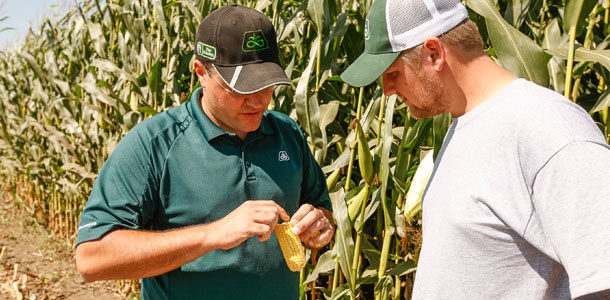But if a person focuses on the seed characteristics needed, the process becomes easier.
First, get together with your trusted seed salesperson. He or she has a wealth of knowledge about your local growing conditions and soil types. Growing conditions vary widely across geographic areas and may require unique product properties. That’s why it’s so important to have a team member with local knowledge and understanding. Your seed salesperson also can narrow your selection to a handful of hybrids that will work in your area, thus making the decision easier.
Agronomics should still be your first criterion in selecting silage hybrids for the next planting season. A silage product must contain the proper agronomic package to grow well in your environment and enable a fall harvest. Ask yourself a few fundamental questions: What are the common diseases in my area? What insect pressures exist? What special environmental concerns persist? Make sure that the hybrids selected can handle any of these situations, or special ones, for the growing environment.
Next, focus on key characteristics. Look at silage corn’s big-three traits: yield, starch content and fiber digestibility. These should drive your selection. Yield is primarily a function of plant density, plant height and starch content. Starch drives the majority of the energy concentration. And fiber digestibility, as measured by neutral detergent fiber digestibility (NDFD), tends to show small differences between hybrids; it is influenced primarily by the growing environment during the plant’s vegetative growth phase.
When comparing NDFD values from several plots and using absolute values, make sure you note the incubation time point (24, 30 or 48 hours). Brown midrib (BMR) hybrids will have higher NDFD than traditional silage corn when grown in the same location. Yield and starch content also should be evaluated for BMR hybrids.
Make sure you have adequate data to make an informed decision. Ask for the corn hybrid’s absolute values – not just for a numeric ranking on a scale from one to nine. To be 95 percent confident in selecting the best hybrid for silage yield or nutritional traits, corn breeders recommend a minimum of 20 direct, side-by-side comparisons (in the same plot). It is also better to compare the hybrids across multiple growing environments and growing seasons to better understand how they will perform in extreme environments and conditions.
Data from a single plot allows growers to see how a hybrid does in a particular location, but that data has little impact on statistics across the entire operation. That’s because many factors make every acre unique, including, but not limited to, soil compaction, previous crop history, fertility and manure history, soil type, water availability, tillage, insect damage and irrigation.
Another great source for silage data is university plot-testing programs. Most programs offer statistical parameters to help evaluate the robustness of the comparison data. This could be in the form of an average (mean) value for the trait and a least significant difference (LSD); an LSD is used to determine if hybrids are statistically (rather than numerically) different. If the values between two hybrids are equal to or greater than the LSD value (at a 10 percent level), then you can be sure that 90 percent of the time the hybrids are statistically different for that particular trait.
While planning for next year’s cropping season can be a challenging process, paying attention to these things makes the process easier. Make sure you have a plan in place before starting the selection process. Stay focused on your goals and make adjustments as necessary. Use all the data you can to help make the best-informed decision.
One last thing: Start the process now, while this year’s harvest is fresh on your mind. You will be able to remember changes to be addressed with seed selection. Let your seed salesperson know what you liked and didn’t like this year, and the changes you would like to see next year. Also, inform him or her about your priorities related to the big-three traits, so the selection of hybrids can be adjusted to better suit your needs.
In the end, a little extra planning this year will help a lot when planting next year. FG
PHOTO
Start next year’s silage seed selection process by discussing the priorities of your big-three traits – yield, starch content and fiber digestibility – with your seed salesman. Photo provided by Matt Laubach.

Matt Laubach
Dairy Specialist
DuPont Pioneer











